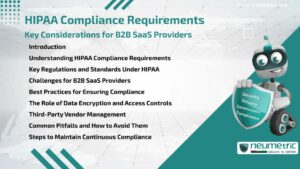Table of Contents
ToggleIntroduction: The Digital Battleground
Imagine the federal government’s information systems as a sprawling digital fortress. Within its walls lie secrets that, if compromised, could threaten national security, disrupt critical infrastructure or expose sensitive personal data. FISMA levels are the architectural blueprints of this fortress, dictating how each room & corridor should be secured based on the value of the information it contains.
FISMA, enacted in 2002 & later updated in 2014, established a comprehensive framework to protect government information, operations & assets against natural or human-made threats. At the heart of this framework lies the concept of FISMA levels, which categorize information & information systems based on their importance & the potential impact of a security breach.
Understanding FISMA Levels: The Building Blocks of Federal Information Security
The Three (3) Pillars of Information Security
Before diving into FISMA levels, it’s crucial to understand the three (3) fundamental objectives of information security:
- Confidentiality: Ensuring that information is not disclosed to unauthorized individuals or systems.
- Integrity: Maintaining & assuring the accuracy & consistency of data over its entire lifecycle.
- Availability: Ensuring that information is accessible to authorized users when needed.
These objectives, often referred to as the CIA triad, form the foundation upon which FISMA levels are built.
FISMA Levels Explained
FISMA levels are essentially a risk management tool. They help federal agencies determine the appropriate security controls needed to protect their information & information systems. The classification is based on the potential impact that a breach of security could have on agency operations, assets or individuals.
There are three (3) FISMA levels:
- Low
- Moderate
- High
Let’s explore each of these FISMA levels in detail.
Low Impact (FISMA Low)
At the Low impact level, the loss of Confidentiality, Integrity or Availability [CIA] is expected to have a limited adverse effect on organizational operations, organizational assets or individuals.
Examples of Low impact information might include:
- Public-facing websites with non-sensitive information
- General administrative information
- Some types of research data
Moderate Impact (FISMA Moderate)
The Moderate impact level suggests that a security breach could have a serious adverse effect on organizational operations, organizational assets or individuals.
Examples of Moderate impact information might include:
- Personally Identifiable Information [PII]
- Financial information not critical to agency mission
- Law enforcement data
High Impact (FISMA High)
At the High impact level, a security breach could be expected to have a severe or catastrophic adverse effect on organizational operations, organizational assets or individuals.
Examples of High impact information might include:
- National security data
- Critical infrastructure information
- Emergency preparedness information
It’s important to note that these FISMA levels are not just abstract concepts. They directly translate into specific security controls & measures that must be implemented to protect the information.
The FISMA Levels in Action: From Theory to Practice
Understanding FISMA levels is one thing, but seeing how they translate into real-world security measures brings the concept to life.
Security Controls Across FISMA Levels
Each FISMA level corresponds to a set of security controls outlined in NIST Special Publication 800-53. These controls become more stringent as you move up the FISMA levels.
Here’s a simplified comparison of some security controls across FISMA levels:
Security controls can be categorized based on their impact levels: low, moderate & high. For access control, a basic level is suitable for low impact, while enhanced measures are needed for moderate impact & stringent controls are required for high impact.
In the realm of audit & accountability, limited auditing may suffice for low impact situations, but comprehensive auditing is necessary for moderate impact & extensive auditing is essential for high impact scenarios.
Regarding incident response, a basic plan is adequate for low impact incidents, while a detailed plan with testing is appropriate for moderate impact situations & an advanced plan that includes testing & simulation is critical for high impact incidents.
Lastly, system & communications protection should begin with minimal measures for low impact, progress to moderate protection for moderate impact & involve extensive protections for high impact systems.
As you can see, the higher the FISMA level, the more robust & comprehensive the security controls become.
The Process of Determining FISMA Levels
Determining the appropriate FISMA level for an information system isn’t a simple checkbox exercise. It requires a thorough analysis of the information handled by the system & the potential impact of a security breach.
The process typically involves these steps:
- Information Type Identification: Agencies must identify the types of information processed, stored or transmitted by the system.
- Impact Analysis: For each information type, agencies assess the potential impact of a loss of confidentiality, integrity or availability.
- System Categorization: Based on the highest impact level among the information types, the overall system is categorized into one of the three FISMA levels.
- Security Control Selection: Once the FISMA level is determined, agencies select & implement the corresponding security controls.
This process ensures that security measures are commensurate with the risk & magnitude of harm resulting from unauthorized access, use, disclosure, disruption, modification or destruction of information.
Beyond the Basics: Advanced Considerations in FISMA Levels
While the three FISMA levels provide a solid foundation for information security, the real world is often more complex.
Hybrid Systems & FISMA Levels
In practice, many federal information systems handle data of varying sensitivity levels. These hybrid systems pose unique challenges in applying FISMA levels.
For instance, a system might process mostly Low impact information, but also contain pockets of Moderate or High impact data. In such cases, agencies often need to implement security controls corresponding to the highest level of data sensitivity, even if it only applies to a small portion of the system.
This “protect to the highest level” approach, while secure, can sometimes lead to inefficiencies & increased costs. As a result, some agencies are exploring more nuanced approaches, such as data segmentation & containerization, to apply different security controls to different parts of a system based on data sensitivity.
The Role of Continuous Monitoring in FISMA Compliance
FISMA levels aren’t a one-and-done classification. The law requires agencies to continuously monitor their information systems to ensure ongoing compliance & security.
This continuous monitoring process involves:
- Regular system scans & vulnerability assessments
- Real-time tracking of security-related information
- Ongoing risk assessment & mitigation
- Periodic re-evaluation of FISMA levels & security controls
Through continuous monitoring, agencies can adapt their security posture in response to evolving threats, ensuring that their FISMA level classifications & corresponding security measures remain effective over time.
Challenges & Criticisms of FISMA Levels
While FISMA levels have significantly improved federal information security, the system is not without its critics.
The Complexity Conundrum
One common criticism is that the process of determining & implementing FISMA levels can be overly complex & bureaucratic. Small agencies or those with limited resources may struggle to navigate the extensive requirements, potentially leading to incomplete or ineffective implementation.
The “Checkbox Mentality” Trap
Another concern is that FISMA compliance can sometimes devolve into a “checkbox mentality,” where agencies focus more on meeting specific requirements rather than achieving genuine security. This approach can lead to a false sense of security & may not adequately protect against sophisticated, evolving threats.
Balancing Security & Usability
Implementing stringent security controls, especially at higher FISMA levels, can sometimes impede user productivity & system functionality. Striking the right balance between security & usability remains an ongoing challenge for many agencies.
The Broader Context: FISMA Levels in the Cybersecurity Ecosystem
FISMA levels don’t exist in isolation. They’re part of a broader ecosystem of cybersecurity frameworks & regulations.
FISMA & NIST: A Symbiotic Relationship
The National Institute of Standards & Technology [NIST] plays a crucial role in operationalizing FISMA requirements. NIST Special Publications, particularly the 800 series, provide detailed guidance on implementing FISMA, including how to determine & apply FISMA levels.
FISMA Levels & Other Security Frameworks
While FISMA levels are specific to U.S. federal agencies, the underlying principles align with other widely-used security frameworks. For instance, the concept of risk-based security controls is also found in frameworks like ISO 27001 & the NIST Cybersecurity Framework.
Understanding these connections can help organizations outside the federal government leverage FISMA concepts to enhance their own security postures.
Conclusion
As we’ve explored, FISMA levels play a crucial role in protecting the vast & varied information landscape of the U.S. federal government. By providing a structured approach to classifying information sensitivity & applying appropriate security controls, FISMA levels help agencies build robust defenses against an ever-evolving array of cyber threats.
However, the journey doesn’t end here. As technology advances & new threats emerge, the concept of FISMA levels will likely continue to evolve. The challenge for federal agencies will be to stay agile, continuously adapting their security measures while maintaining compliance with FISMA requirements.
Looking ahead, we might see more granular classification levels, increased integration of artificial intelligence in security control implementation or new approaches to balancing security & usability. Whatever the future holds, one thing is clear: the principles behind FISMA levels – assessing risk, applying appropriate protections & continuously monitoring security – will remain fundamental to safeguarding our nation’s digital assets.
As citizens, understanding FISMA levels gives us insight into how our government protects sensitive information. It reminds us of the constant vigilance required in our increasingly digital world & the complex challenges faced by those tasked with securing our nation’s most critical data.
Key Takeaways
- FISMA levels (Low, Moderate, High) categorize federal information & systems based on the potential impact of a security breach.
- The classification of FISMA levels is based on the CIA triad: Confidentiality, Integrity & Availability.
- Each FISMA level corresponds to a set of security controls that become more stringent at higher levels.
- Determining FISMA levels involves identifying information types, analyzing potential impacts & categorizing systems.
- Continuous monitoring is crucial for maintaining FISMA compliance & adapting to evolving threats.
- FISMA levels face challenges including complexity, potential “checkbox mentality,” & balancing security with usability.
- Understanding FISMA levels provides insights into how the U.S. government protects sensitive information in the digital age.
Frequently Asked Questions [FAQ]
Are FISMA levels only applicable to government agencies?
While FISMA levels are specifically designed for U.S. federal agencies, the underlying principles can be adopted by any organization seeking to improve its information security posture.
How often should FISMA levels be reassessed?
FISMA requires continuous monitoring, which includes periodic reassessment of system categorization. While there’s no fixed timeframe, it’s generally recommended to reassess FISMA levels annually or whenever there are significant changes to the system or its environment.
Can a single system have multiple FISMA levels?
While a system is typically categorized at the highest level of sensitivity of the information it processes, in practice, many systems handle data of varying sensitivity. This can lead to hybrid approaches in implementing security controls.
How do FISMA levels relate to data classification schemes like “Top Secret” or “Classified”?
FISMA levels & traditional classification schemes serve different purposes. FISMA levels are about the potential impact of a security breach, while classifications like “Top Secret” are about the sensitivity of the information content. However, highly classified information would typically correspond to a High FISMA level.
Does compliance with FISMA levels guarantee complete security?
While FISMA levels provide a robust framework for security, they don’t guarantee complete protection. Cybersecurity is an ongoing process that requires constant vigilance, adaptation to new threats & a comprehensive approach beyond just meeting compliance requirements.





